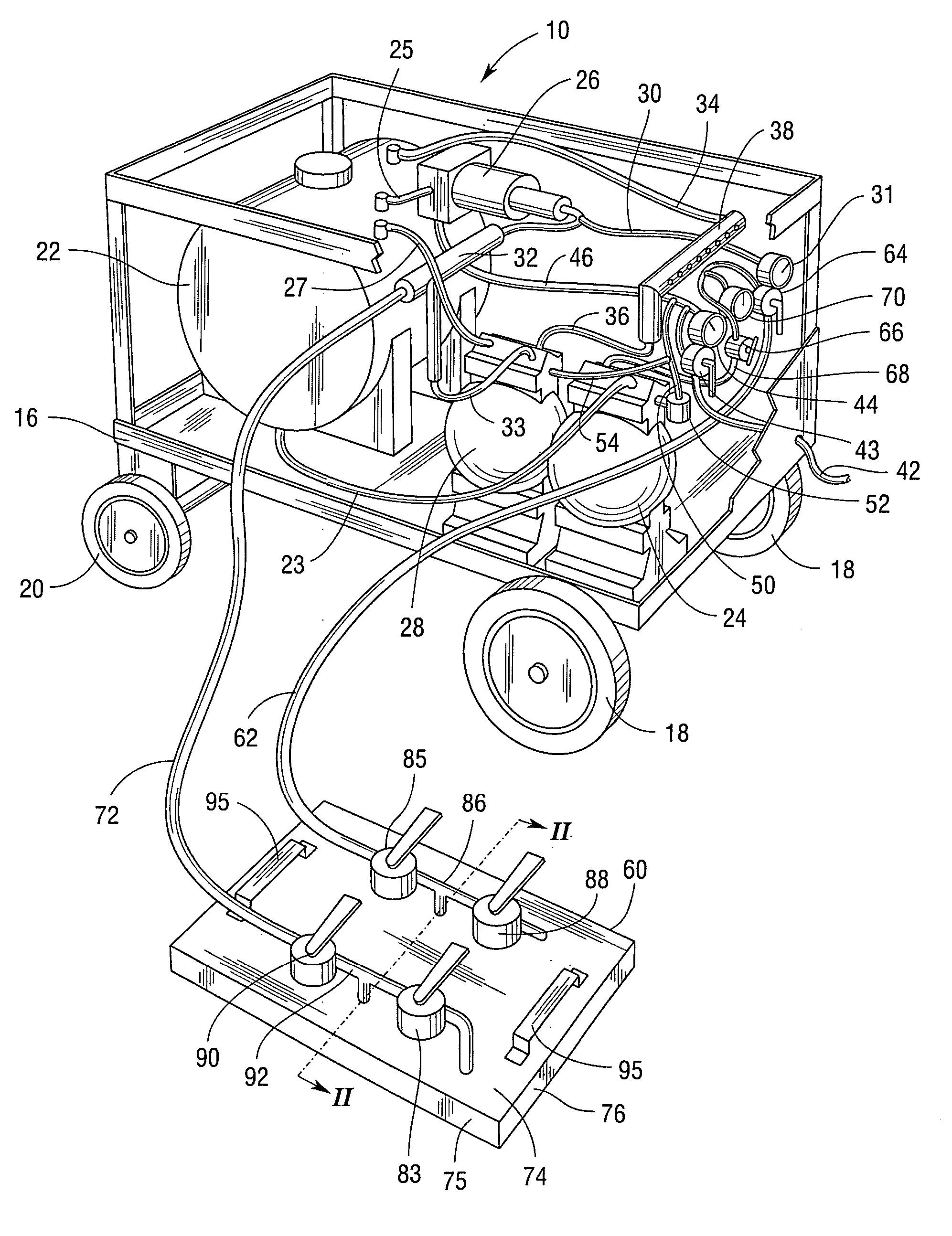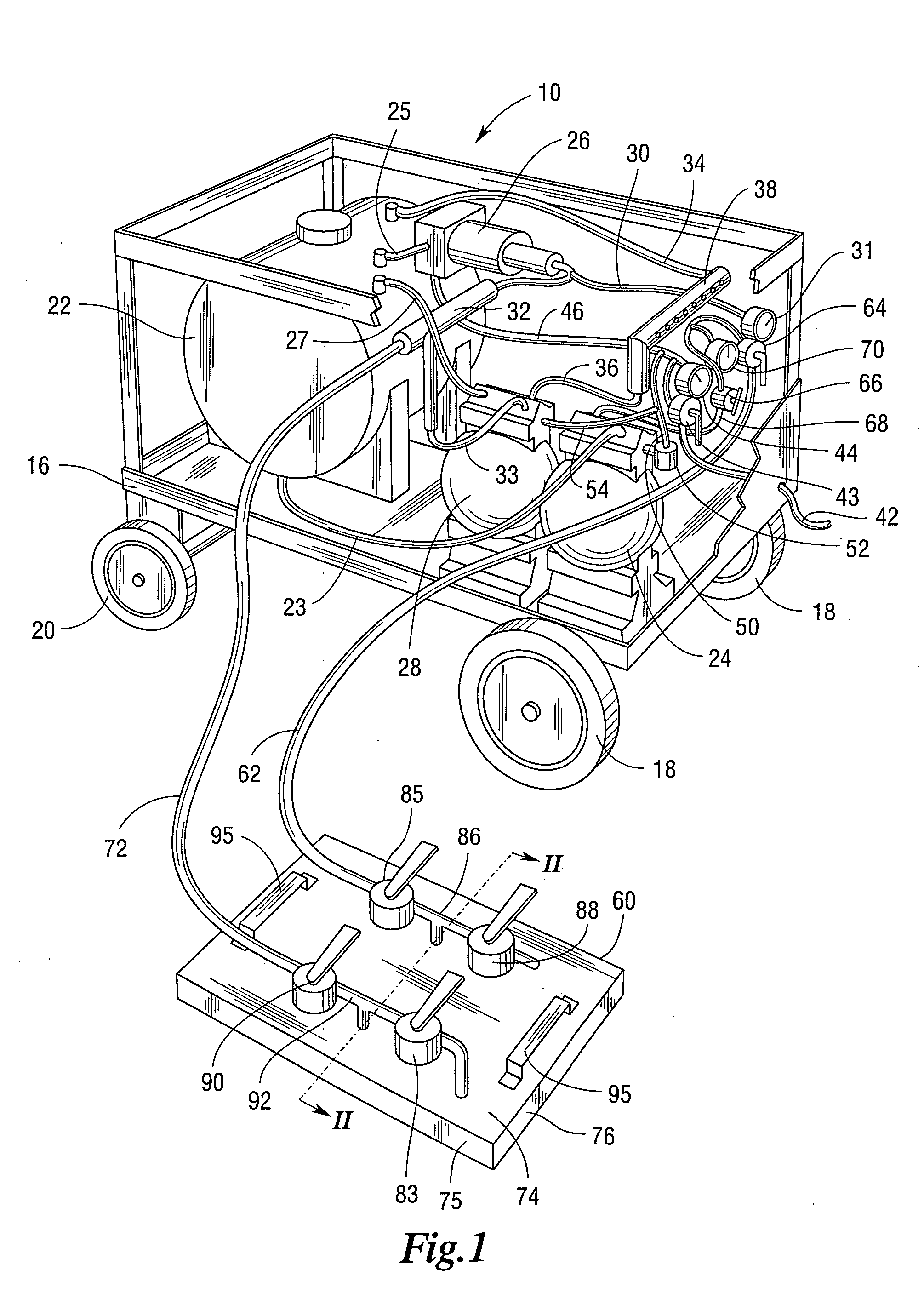Apparatus and method for treating and impregnating porous structures
- Summary
- Abstract
- Description
- Claims
- Application Information
AI Technical Summary
Benefits of technology
Problems solved by technology
Method used
Image
Examples
Embodiment Construction
[0029] Referring now to the drawing there is shown an apparatus 10 for treating a porous structure formed from concrete, masonry, brick, stone, marble, or wood including those structures with reinforcement members or other members embedded therein. Typical of such porous structures are building parts, roads, bridges, airport runways, marine supports, monuments, sculptures, art works, and various other man made outdoor structures. The apparatus and method of the present invention are useable to treat structures in the atmosphere or under water, and structures which are upright, such as walls and ceilings. FIG. 2 shows a section of a porous concrete structure 12 which could be typically a building floor, roadbed, walkway, or an airport runway, having embedded therein steel reinforcing rods 14. The apparatus 10 would be used for treating the porous structure 12, apparatus 10, as shown in the various figures, includes a portable frame or carriage 16 which may be moved from place to plac...
PUM
| Property | Measurement | Unit |
|---|---|---|
| Structure | aaaaa | aaaaa |
| Shape | aaaaa | aaaaa |
| Distance | aaaaa | aaaaa |
Abstract
Description
Claims
Application Information
 Login to View More
Login to View More - R&D
- Intellectual Property
- Life Sciences
- Materials
- Tech Scout
- Unparalleled Data Quality
- Higher Quality Content
- 60% Fewer Hallucinations
Browse by: Latest US Patents, China's latest patents, Technical Efficacy Thesaurus, Application Domain, Technology Topic, Popular Technical Reports.
© 2025 PatSnap. All rights reserved.Legal|Privacy policy|Modern Slavery Act Transparency Statement|Sitemap|About US| Contact US: help@patsnap.com



